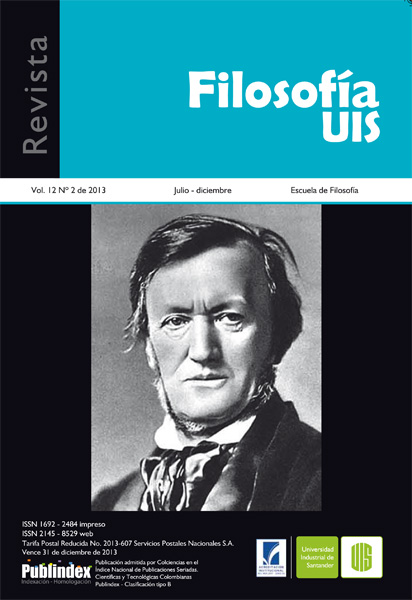Cartography of infinite spaces: from the re-presentation to the presentation of natura
Published 2013-12-03
Keywords
- geometry,
- visual tools,
- digital and video technology,
- audiovisual narrative
How to Cite
Copyright (c) 2013 German A. Duarte

This work is licensed under a Creative Commons Attribution 4.0 International License.
Abstract
Since antiquity, technology has been modifying the relationship between Man and Nature. A number of technological tools have been developed in scientific field in order to ‘translate’ natural objects and phenomena or to overcome the weakness of human senses. Among these tools, visual media, especially the cinematographic camera, created a proper space and became, in a second stage, narrative tools. On the grounds of these considerations, the paper is aimed at investigating visual media and narrative. In particular, the paper analyzes how digital technology emphasizes the spatial nature of visual narrative, how this space seems to correspond to fractal geometry, and how it transforms the narrative act into cartography of an infinite space.
Downloads
References
- Aeschylus. George, Th. (ed.) (1979). The Prometheus Bound. Nueva York: Dover.
- Algarotti, F. Da Posso, G. (ed.) (1762), Saggio sopra la pittura, Bari: Gius. Laterza & Figli.
- Bacon, F. (1960). The New Organon and Related Writings. Nueva York: Pearson Custom.
- Balázs, B. (2001). Der Geist des Films. Frankfurt am Main: Suhrkamp.
- Barthes, R. (1980). La chambre claire. Notes sur la photographie. París: Gallimard.
- Bazin, A. (2008). Qu’est-ce que le cinéma ? París: Cerf.
- Bonitzer, P. (1980). Le champ aveugle. Ligugé: Gallimard.
- Castells, M. (2001). Internet Galaxy. Oxford: Oxford University Press.
- Cicero. Rackham, H.M.A. (ed.) (1933). De Natura Deorum. Londres: London W. Heinemann
- Deleuze, G. (1966). Le bergsonisme. París: PUF.
- Deleuze, G. (1983). Cinéma 1. L’immage-mouvement. París: Minuit.
- Deleuze, G. (1985). Cinéma 2. L’image-temps. París: Minuit.
- Deleuze, G. (1988). Le Plie, Leibniz et le baroque. París: Minuit.
- Eco, U. (1962). Opera aperta. Forma e indetermiazione nelle poetiche contemporanee. Milán: Bompiani.
- Eco, U. (2003). Dire quasi la stessa cosa. Esperienze di traduzione. Milán: Bonpiani.
- Engell, L. (1999). “Fernsehen mit Gilles Deleuze”. Der Film bei Deleuze. Weimar: Bauhaus Press.
- Galimberti, U. (2005). Psiche e Techne. L’uomo nell’età tecnica. Milán: Feltrinelli.
- Grassmann, H. (1878), Die Ausdehnungslehre von 1844: oder Die Lineale Ausdehnungslehre, ein neur Zweig der Mathematik. Leipzig: Ulan.
- Greimas, A. J. (1966). Sémantique structurale. Recherche et méthode. París: Larousse.
- Gombrich, E. (1960). Art and Illusion. A Study in the Psychology of Pictorial Representation. Hong Kong: Princeton University Press.
- Heidegger, M. (1938). “Die Zeit des Weltbildes”. Holzwege, Frankfurt am Main: Klostermann.
- Heidegger, M. (1954). Vom Wesen der Wahrheit. Frankfurt am Main: Klostermann.
- Marey, É. J. (1973). La machine animale, locomotion terrestre et aérienne. París: École Pratique Des Hautes Études.
- McKenzie, W. (2004). A Hacker Manifesto. Cambridge: Havard University Press.
- Metz, C. (1968). Essais sur la signification au cinema. París: Klincksieck.
- Plotinus. Armstrong, A.H. (ed.) (1967). Ennead. Londres: Loeb Classical
- Serres, M. (1993). Les origins de la Géométrie. París: Flammarion.
- Spielmann, Y. (2005). Video. Das reflexive Médium. Frankfurt am Main: Suhrkamp.
- Cibergrafía
- Sagrada Biblia. (1960). "Génesis". [Kindle DX version]. Obtenida de: Amazon.com
